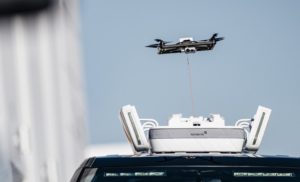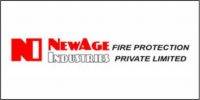
 The increasing complexity of security challenges in the modern world has necessitated the use of advanced surveillance technologies. Drones, also known as Unmanned Aerial Vehicles (UAVs), have emerged as a game-changing solution for enhancing surveillance and security. Equipped with high-resolution cameras, artificial intelligence (AI), thermal imaging, and real-time data transmission, drones provide unparalleled situational awareness and rapid response capabilities. This article explores the role of drones in modern security, their applications, advantages, challenges, and future trends.
The increasing complexity of security challenges in the modern world has necessitated the use of advanced surveillance technologies. Drones, also known as Unmanned Aerial Vehicles (UAVs), have emerged as a game-changing solution for enhancing surveillance and security. Equipped with high-resolution cameras, artificial intelligence (AI), thermal imaging, and real-time data transmission, drones provide unparalleled situational awareness and rapid response capabilities. This article explores the role of drones in modern security, their applications, advantages, challenges, and future trends.
- The Role of Drones in Modern Security
Drones have transformed traditional surveillance methods by offering increased coverage, automated monitoring, and real-time threat detection. Unlike fixed surveillance systems, drones provide mobility and flexibility, making them ideal for monitoring dynamic environments.
1.1 Advantages of Drones in Surveillance and Security
Enhanced Aerial Surveillance: Provides high-altitude and wide-area monitoring.
Real-time Data Collection: Streams live video feeds for instant decision-making.
Cost-Effective Security Solution: Reduces the need for expensive infrastructure.
Autonomous Patrolling: AI-driven drones can operate without human intervention.
Rapid Deployment: Quickly deployed to respond to emergencies and security threats.
- Key Applications of Drones in Surveillance and Security
2.1 Border Security and National Defense
UAVs are extensively used for monitoring international borders, preventing illegal crossings, and detecting smuggling activities.
Military-grade drones support intelligence, surveillance, and reconnaissance (ISR) missions.
2.2 Law Enforcement and Public Safety
Police forces use drones for crowd monitoring, crime scene investigation, and suspect tracking.
Drones equipped with facial recognition and AI analytics enhance public safety measures.
2.3 Critical Infrastructure Protection
UAVs monitor power plants, oil refineries, airports, and transportation hubs against security threats.
Thermal imaging and LiDAR-equipped drones detect unauthorized intrusions and structural vulnerabilities.
2.4 Smart Cities and Urban Surveillance
AI-integrated drones assist in traffic management, disaster response, and emergency evacuations.
UAVs support law enforcement agencies in reducing crime rates in metropolitan areas.
2.5 Disaster Response and Search & Rescue Operations
Drones are deployed for locating missing persons, assessing disaster-stricken areas, and delivering emergency supplies.
Night vision and thermal imaging drones enhance visibility in low-light environments.
2.6 Private Security and Corporate Surveillance
Enterprises use UAVs to monitor industrial sites, commercial properties, and event venues.
Autonomous drones patrol large facilities, reducing reliance on human security guards.
- Technologies Enhancing Drone Surveillance
3.1 AI and Machine Learning
AI-powered drones analyze behavioral patterns to detect unusual activities.
Machine learning models improve object recognition, reducing false alarms.
3.2 Thermal Imaging and LiDAR
Enables drones to operate in challenging environments such as smoke, fog, and nighttime conditions.
Detects heat signatures of unauthorized personnel in restricted zones.
3.3 Edge Computing and Real-Time Data Analytics
Reduces latency by processing surveillance data on the drone itself.
Enables quicker decision-making for security teams.
3.4 5G and Enhanced Communication Systems
High-speed connectivity supports real-time video streaming and cloud-based analysis.
Enables coordinated drone swarms for large-scale security missions.
- Challenges and Ethical Considerations
4.1 Privacy and Data Protection
Drones equipped with facial recognition raise concerns about mass surveillance.
- Regulatory frameworks must ensure ethical drone usage in public spaces.
4.2 Cybersecurity Threats
Drones are vulnerable to hacking, GPS spoofing, and data breaches.
Encrypted communication channels and cybersecurity protocols are necessary.
4.3 Regulatory Compliance
Airspace regulations vary by country, impacting drone operations.
Governments must establish standardized drone laws for commercial and security use.
4.4 Autonomous Decision-Making Risks
Fully autonomous drones must be programmed with ethical AI principles.
Human oversight is essential in critical security operations.
- Future Trends in Drone Surveillance
5.1 Drone Swarms for Coordinated Security
AI-driven drone swarms will enhance perimeter security and military reconnaissance.
Coordinated UAV networks improve response times and area coverage.
5.2 Integration with IoT and Smart Security Systems
Drones will collaborate with IoT-enabled security cameras and sensors.
Smart surveillance systems will enhance predictive threat detection.
5.3 Quantum Encryption for Secure Drone Communication
Quantum-resistant encryption will prevent drone data interception.
Ensures secure transmission of surveillance footage and intelligence.
5.4 Biometric and Behavior-Based Threat Detection
AI-enabled drones will analyze human behavior to identify potential threats.
Behavioral analytics will support proactive security measures.
Conclusion
Drones have revolutionized modern surveillance and security by offering real-time intelligence, rapid response capabilities, and enhanced situational awareness. As technology advances, UAVs will become more autonomous, intelligent, and integrated with smart security solutions. However, ethical, legal, and cybersecurity challenges must be addressed to ensure responsible deployment. The future of drone surveillance lies in AI-powered automation, secure data transmission, and enhanced collaboration with existing security frameworks.























































